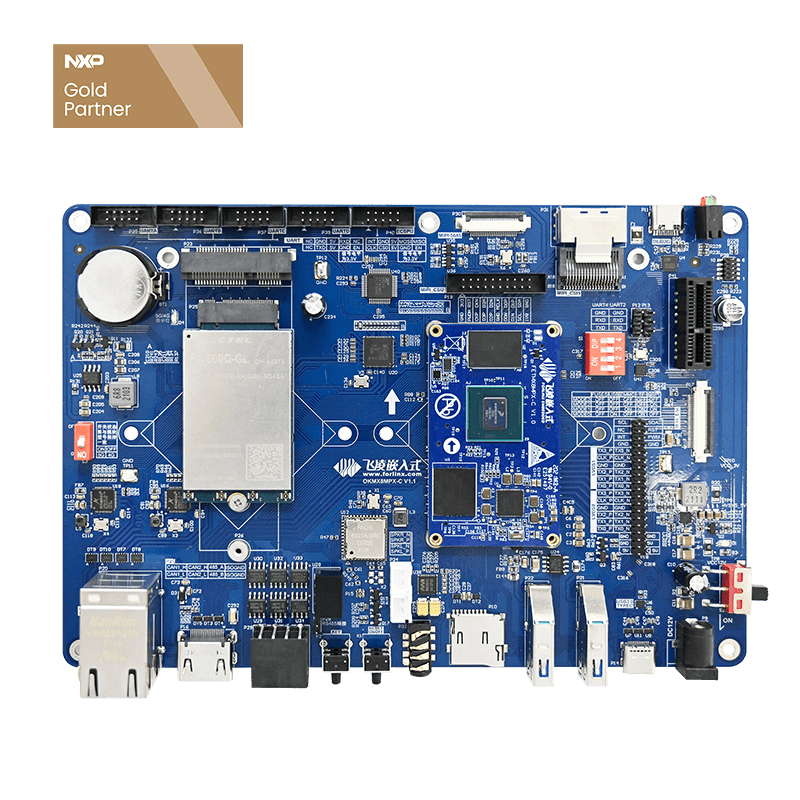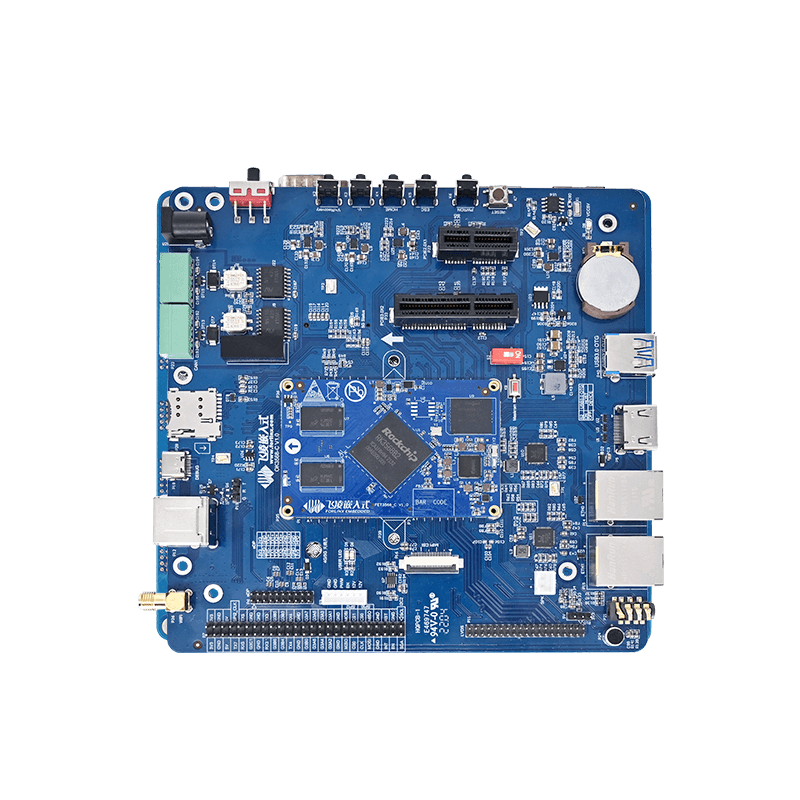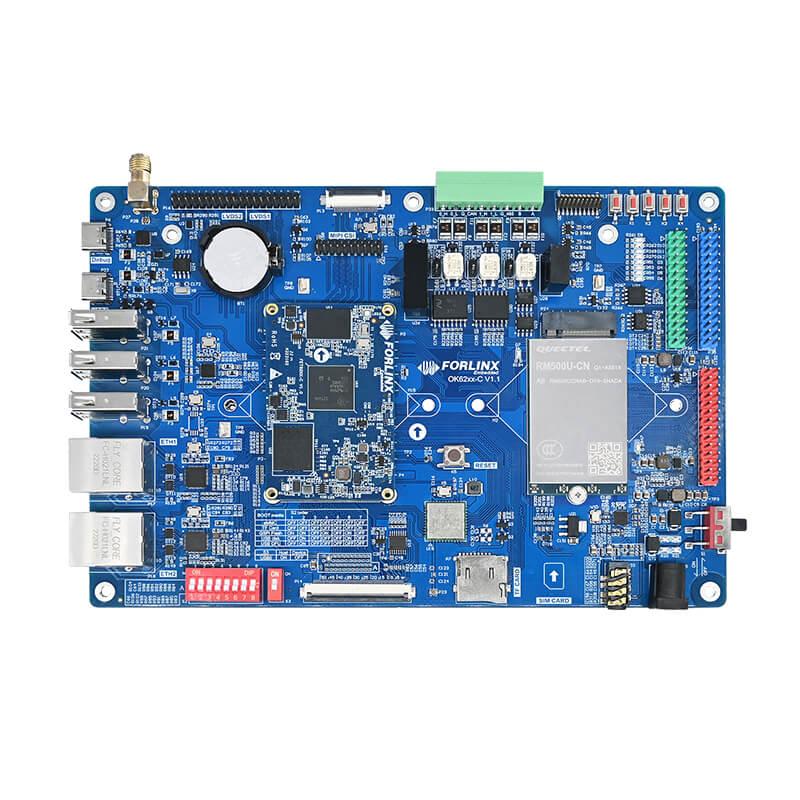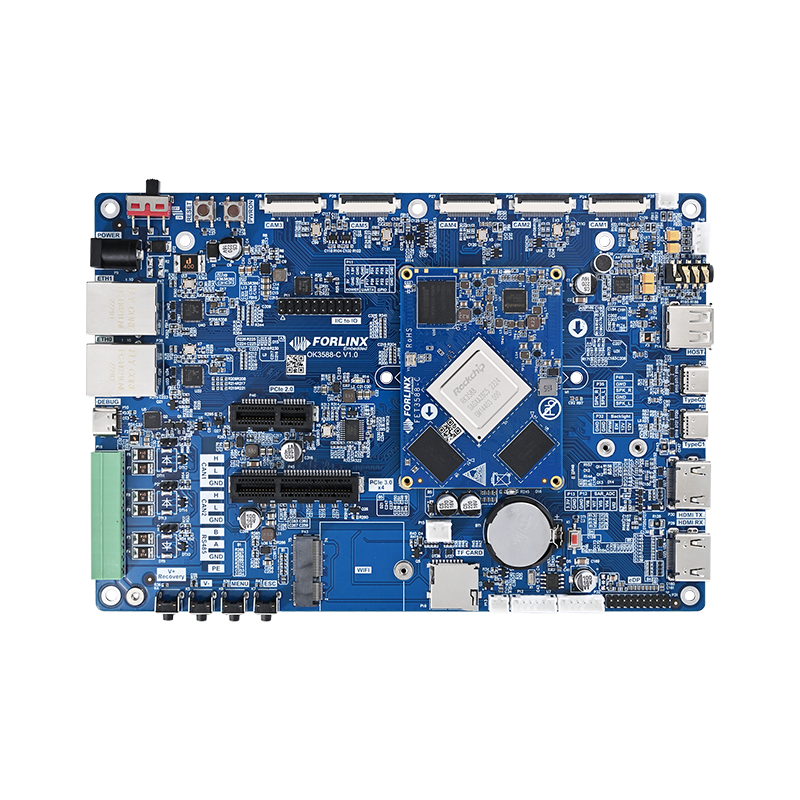
Introduction to Embedded Single Board Computer
An embedded Single Board Computer is a complete circuit board that integrates a processor, memory, interfaces, clocks, and other auxiliary circuits. It is commonly used to create embedded systems, such as those used for controlling robots, automobiles, or industrial equipment.
Here is an introduction to embedded Single Board Computers and some tips on how to use and choose the right one:
01 What is an Embedded Single Board Computer?
A Single Board Computer is a circuit board used for developing embedded systems. It includes a central processing unit (CPU), memory, input devices, output devices, data pathways/buses, and external resource interfaces, among other hardware components. It serves as a platform for cooperation within the semiconductor industry, providing manufacturers with essential low-level hardware, system, and driver resources. This eliminates the need for users to invest manpower and time to complete these low-level tasks. Common types of Single Board Computers include 51, ARM, FPGA, and DSP. Forlinx is dedicated to the development and service of ARM architecture Single Board Computers.
Single Board Computers, in concept, are very similar to software outsourcing. In terms of embedded products, the hardware, boot code, drivers, file systems, protocol layers, and basic application software are considered common and generic components of electronic products. They do not encompass the key technologies that differentiate the product. In this era that emphasizes division of labor and cooperation, if the workload in this area is significant or if a manufacturer lacks relevant development personnel, they can choose to outsource these development tasks to a third-party. This accelerates the product development process and enables quick time-to-market, seizing a competitive advantage.
Forlinx Embedded Single Board Computer integrates all the core functional circuits commonly found in embedded products. It combines the processor with RAM, Flash memory, power management, LCD, Ethernet, USB, and other universal interfaces into a compact, reliable, and electromagnetic-compatible electronic motherboard. By adopting a SoM for product development, you can avoid complex processor development, BGA design, high-speed PCB routing, design verification, EMC compliance design, as well as save the effort required for extensive board debugging and BSP (Board Support Package) development work.
When selecting a Single Board Computer, you are actually choosing not just a hardware board and the resources it provides, such as source code, but also choosing a partner, a collaborator who provides software and hardware services to users.
Similar to the cooperation model of software outsourcing, the collaboration between users and suppliers in this case is primarily focused on software cooperation. It requires thorough communication between the user and the supplier to understand the specific requirements of the product. The supplier needs to continuously allocate personnel according to the user's needs to ensure effective collaboration.
During the process of supporting customers in product development, Forlinx often encounters issues such as modifying the file system, serial port testing, upgrading Flash memory from 64MB to 128MB, etc. In most cases, these issues need to be resolved through software solutions. This forms a high level of interaction between embedded industry suppliers and customers in terms of after-sales support and customer development.
In other words, embedded Single Board Computers serve as the medium for user's software outsourcing. Compared to traditional software outsourcing, Single Board Computers actually provide users with value in terms of both hardware and software services.
02 How to Use an Embedded Single Board Computer?
Using an embedded Single Board Computer requires some knowledge of hardware and software. Here are a few steps to help you get better at using embedded Single Board Computers:
- 1. Understand the specifications and features of the Single Board Computer, read relevant documentation and manuals, or study relevant tutorials.
- 2. Familiarize yourself with the programming language and IDE environment you will use.
- 3. Write code, connect hardware, debug the program, and validate the results. This includes tasks such as GPIO control, PWM waveform output, serial communication, and short message transmission.
03 How to Choose an Embedded Single Board Computer?
Choosing the right embedded Single Board Computer can greatly improve development efficiency. Here are some factors to consider when purchasing an embedded Single Board Computer:
- 1. Processing power: Consider the specification and performance of the board’s processor to ensure it can handle your application’s requirements. ARM Cortex series should be given priority consideration because they have extensive support and ecosystem.
- 2. Interfaces and expand-ability: It is important to determine which peripherals need to be added based on your project requirements. Check if the Single Board Computer has relevant general-purpose input/output (GPIO) and expansion interfaces. It is also beneficial to consider the compatibility with operating systems and network connectivity components.
- 3. Cost: This can be an important factor for budget-conscious projects, but it's important not to focus solely on price. Quality should be a priority consideration. You can also explore options such as using older models that have already been released, which may help reduce costs.
- 4. Support and maintenance: Look for a reliable supplier or manufacturer that offers timely technical support and maintenance services. Having a strong support team can definitely help you solve problems and overcome challenges.
- 5. Estimated life-cycle: Consider the life-cycle of the Single Board Computer. Choosing a product with long-term support is indeed crucial to ensure ongoing support and availability of replacements in the future.
- 6. Hardware and Software Ecosystem: Consider the ecosystem of the Single Board Computer, including development tools, documentation, community support, and third-party software and hardware support. Indeed, a strong ecosystem can greatly reduce development time and difficulty.
- 7. User feedback and reviews: Look for user feedback and reviews about the Single Board Computer to understand the experiences and suggestions of other developers. Searching for user feedback and reviews about the Single Board Computer to understand the experiences and suggestions of other developers.
In general, choosing an embedded Single Board Computer requires considering multiple factors such as performance, interfaces, ecosystem, cost, and support. Exactly, it's important to choose the Single Board Computer that suits your application's specific requirements and goals. This ensures that the chosen board is well-suited for the intended purpose.
Embedded Single Board Computers serve as the medium for user's software outsourcing. Compared to traditional software outsourcing, Single Board Computers actually provide users with value in terms of both hardware and software services.
04 Forlinx's Best Embedded Single Board Computer
▊ SBC based on NXP Processor
Architecture: Cortex-A55
Frequency: 1.4GHz
RAM: 1GB LPDDR4
ROM: 8GB eMMC
System: Linux
Architecture: 2*A55+M33
Frequency: 1.5GHz
RAM: 1GB LPDDR4
ROM: 8GB eMMC
System: Linux 5.15.52+Qt 6.3.2
Architecture: 4*A53+M7
Frequency: 1.6GHZ
RAM: 2GB/4GB LPDDR4
ROM: 16GB eMMC
System: Linux5.4.70+Qt5.15, Android 11
Architecture: Heterogeneous,4*Cortex-A53+M4
Frequency: 1.8GHz
RAM: 2GB DDR4
ROM: 8GB eMMC
System: Linux4.14.78+QT5.10.1,Android9.0
Architecture: Cortex-A72
Frequency: 1.8GHz
RAM: 2GB/4GB LPDDR4
ROM: 8GB eMMC
System: Ubuntu-18.04.1,OpenWrt v18.06.0-rc2
Architecture: Cortex-A53
Frequency: 1.0GHz
RAM: 512MB DDR3L
ROM: 16MB QSPI NorFlash,8GB eMMC
System: Ubuntu-18.04.1,OpenWrt v18.06.0-rc2
Architecture: Cortex-A7
Frequency: 800MHz
RAM: 512MB DDR3
ROM: 8GB eMMC
System: Linux4.1.15+QT5.6
Architecture: Cortex-A7
Frequency: 800MHz
RAM: 256MB DDR3,512MB DDR3
ROM: 256MB NandFlash,4GB eMMC
System: Linux4.1.15+QT5.6
Architecture: Cortex-A9
Frequency: 1.0GHz
RAM: 1GB DDR3,2GB DDR3(optional)
ROM: 8GB eMMC
System: Linux3.0.35+QT4.8.5,Linux4.1.15+QT5.6,Android4.2,Android6.0
▊ SBC based on Texas Instruments Processor
Architecture: Cortex-A53
Frequency: 1.4GHz
RAM: 1GB/2GB DDR4-1600(regular with 1GB)
ROM: 8GB eMMC
System: Linux 5.15.52+Qt 6.3.2
Architecture: Cortex-A8
Frequency: 800MHz
RAM: 512MB DDR3
ROM: 256MB NandFlash,1GB NandFlash
System: Linux3.2+QT4.8,Android2.3,Android4.2,WinCE6.0,Win CE7.0
▊ SBC based on Rockchip Processor
Architecture: 4*A76+4*A55
Frequency: [email protected],[email protected]
RAM: 4GB/8GB LPDDR4x
ROM: 32GB/64GB eMMC
System: Android12.0,Ubuntu*,Linux*
Architecture: Cortex-A55
Frequency: 1.8GHz,2.0GHz
RAM: 2GB/4GB/8GB DDR4(Standard 2GB)
ROM: 16GB eMMC
System: Linux4.19+QT5.12, Android 11
Architecture: Cortex-A53,Cortex-A72
Frequency: 1.4GHz,1.8GHz
RAM: 2GB / 4GB LPDDR3
ROM: 16GB / 32GB eMMC
System: Linux4.4.189+ QT5.12,Android7.1
▊ SBC based on Allwinner Processor
Architecture: Cortex-A7
Frequency: 1.2GHz
RAM: 1GB DDR3,2GB DDR3(optional)
ROM: 8GB eMMC
System: Linux3.10+QT5.9,Android7.1
Architecture: Cortex-A7
Frequency: 1.2GHz
RAM: 1GB DDR3,2GB DDR3(optional)
ROM: 8GB eMMC
System: Linux3.10+QT5.9,Android7.1
Architecture: Cortex-A53
Frequency: 1.5GHz
RAM: 2GB DDR3L
ROM: 8GB eMMC
System: Linux4.9+QT5.12
▊ SBC based on Renesas Processor
Architecture: 2*A55+M33
Frequency: 1.2GHz
RAM: 1GB/2GB DDR4
ROM: 16MB QSPI NorFlash,8GB/16GB(Optional)
System: Linux4.19





